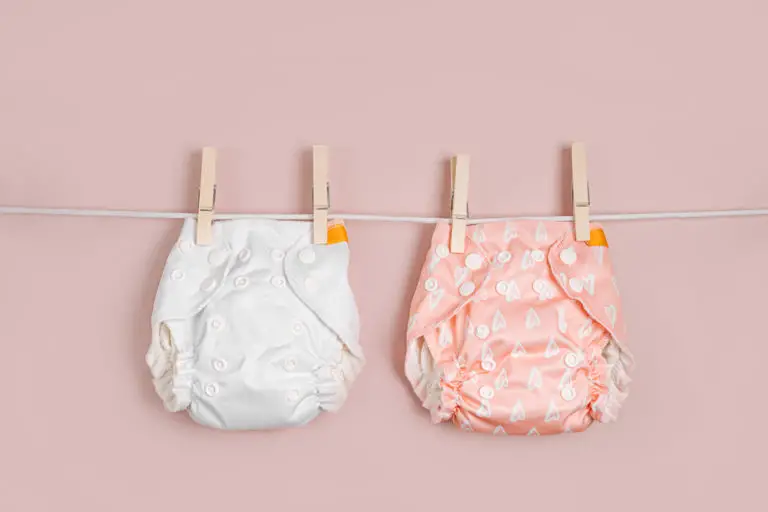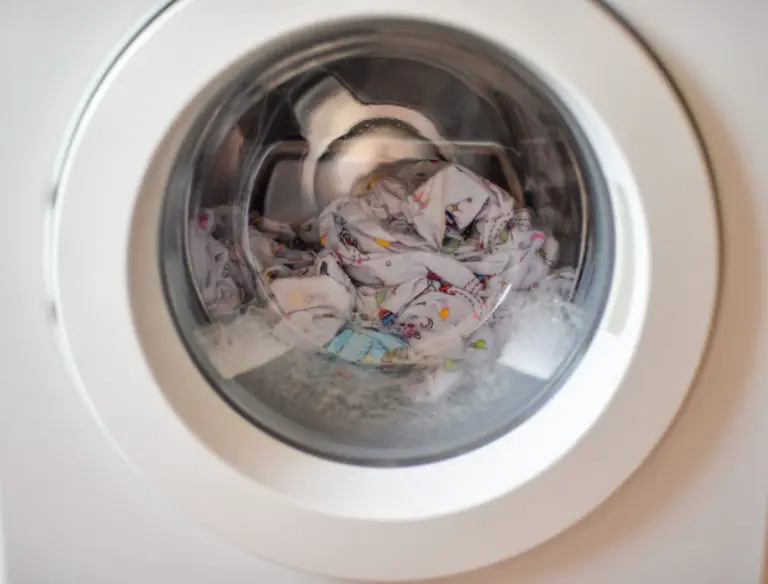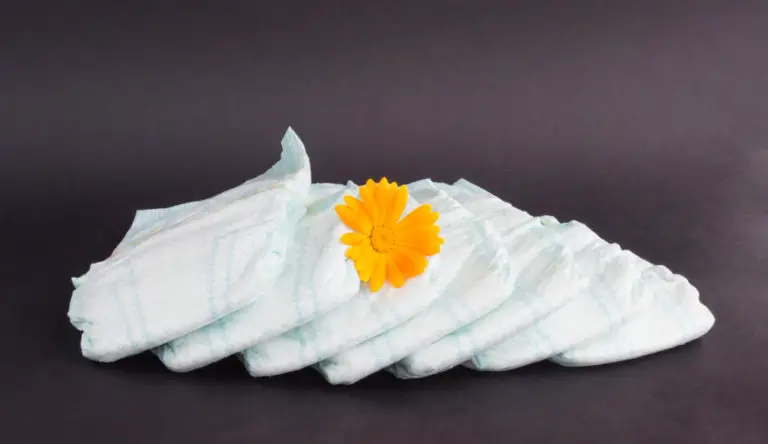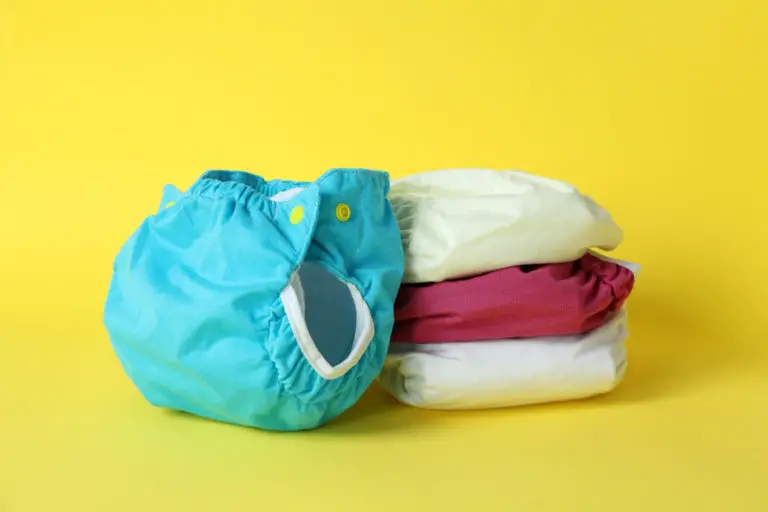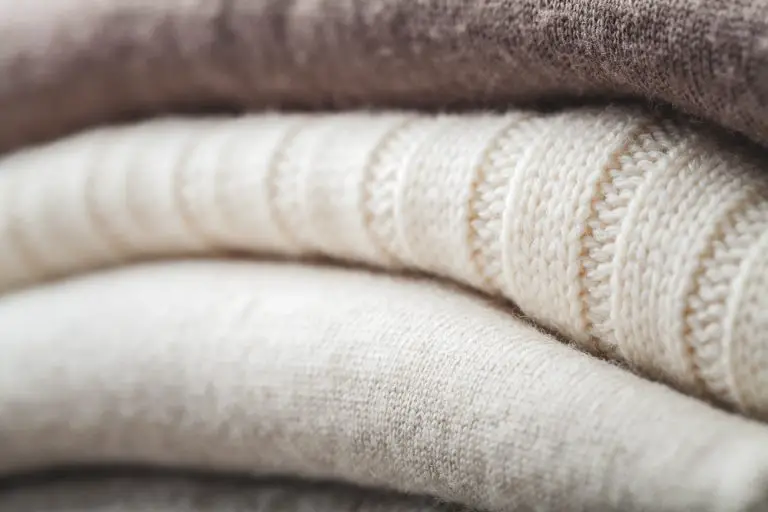Cloth Diaper Rash Treatment & Prevention (2024)
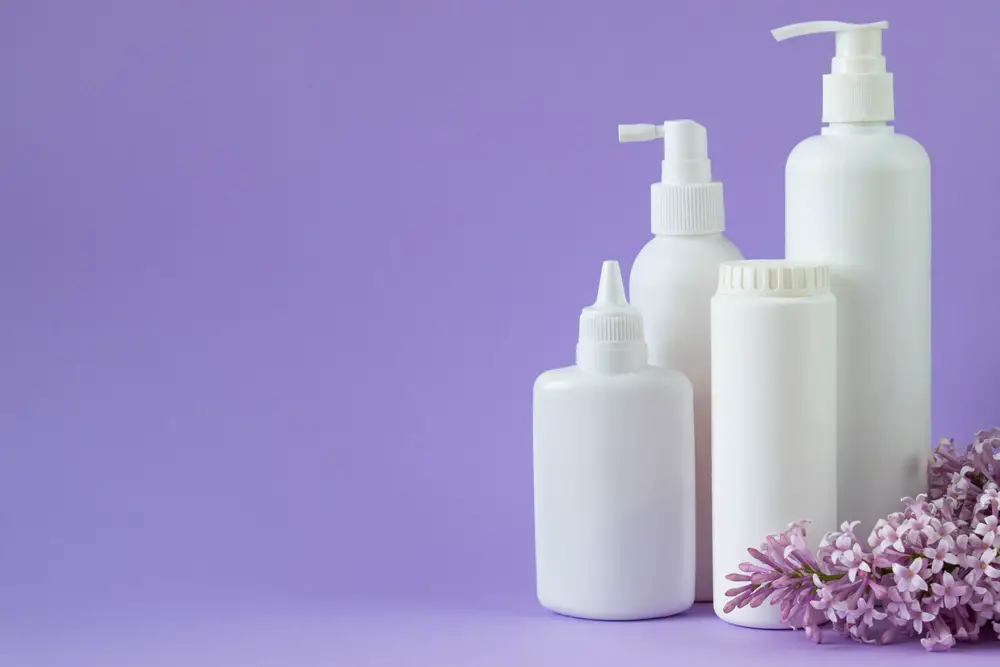
Babies in cloth diapers are less likely to experience diaper rash than their disposable diaper counterparts, but cloth diaper rash can happen.
Cloth diaper rash is often due to allergies, build-up on diapers, or not changing your baby frequently enough. Here’s how to prevent and treat diaper rash when using cloth diapers.
Disclaimer: This article is not intended to replace advice from a medical expert or a physician. Before treating diaper rash, you should always consult your pediatrician.
- Get Rid of Diaper Rash ASAP
- Causes of Cloth Diaper Rash
- Rashes Unrelated to Diapers
- Cloth vs. Disposables Rash
- Avoiding Future Cloth Diaper Rash
How to Get Rid of Diaper Rash ASAP?
Before attempting any home treatment involving ointments, medications, or creams for diaper rash, you should speak with your child’s pediatrician to develop a plan.
However, there are few ways to offer immediate relief from diaper rash from cloth diapers. (1)
Allow the diaper area to dry out and expose their bottom to fresh air. If you are in the privacy of your own home, let your baby go diaper-free for a few hours at a time.
If you are worried about messes, you can place a pet pad under your baby’s blanket as they play.
Another quick way to help clear up diaper rash is you change your baby’s diaper more frequently if a rash pops up. More frequent changes will keep the area dry.
Common Causes of Cloth Diaper Rash
Diaper rash with cloth diapers is not a frequent occurrence, yet it can happen.
The leading causes of cloth diapers causing rashes are sensitive skin or allergies, infrequent diaper changes or poor hygiene, ill-fitting diapers, and build-up and residue on diapers.
The following sections will outline common causes of cloth diaper diaper rash in detail.
1. Sensitive Skin
Individuals with sensitive skin are more likely to develop rashes, redness, and itching from irritants. (2) Sensitive skin can result from a myriad of issues, and females are more likely to suffer from sensitive skin than males.
Your baby is considered to have sensitive skin if they develop a rash or skin change after using soap, lotion, or a change in detergents. (3) Your baby may also be allergic to the fabric in the diapers. A rash due to sensitive skin may appear red, flaky, and blotchy.
Solution
Treating diaper rash due to sensitive skin may be as simple as changing detergents or diaper creams.
You should avoid using detergents with dyes or perfumes, use a mild soap when cleansing, and keep their diaper area dry and clean.
Try switching detergents first if you notice a rash on your baby’s skin and diaper area. If switching detergents doesn’t work, try using a diaper composed of a different diaper textile.
2. Delayed Diaper Changes
If your baby sits too long in a soiled diaper, it can cause diaper rash. (4) Also, if your baby is experiencing diarrhea or frequent bowel movements, they are more prone to diaper rash because feces are more irritating than urine.
A diaper rash due to delayed diaper changes may appear red and blotchy. If it is due to feces irritation, it may appear as a red ring around their rectum.
Solution
The easiest solution to prevent diaper rash from a soiled diaper is to change your baby as soon as you notice a soiled diaper.
Cloth diapers are not as absorbent as disposables, so it is more likely your baby will notice when they are wet; however, not all babies fuss when they soil their diaper. Therefore you should check your newborn’s diaper every one to two hours.
3. Ammonia Burn
Ammonia is a component often found in urine. Urine shouldn’t smell like ammonia on its own; if it does, it could be a sign of an infection or bladder condition. (5)
However, since cloth diapers are used repeatedly, there is potential for ammonia build-up on cloth diapers to occur. As a result, cloth diaper ammonia burn can occur. Ammonia burn is a chemical burn and is a red, flat rash on the skin with possible blisters.
Solution
The easiest solution to preventing ammonia burn is to strip your diapers. Stripping cloth diapers is a deep cleaning process to rid your cloth diapers of buildup and ammonia. There are different ways to strip diapers, but the steps are as follows.
- Fill your tub or top-loading machine halfway with water
- Add a mineral remover solution
- Allow the diapers to soak 4-6 hours, stirring occasionally
- Wash the diapers in hot water only several times
- Dry your diapers
4. Poor Diaper Fit
An ill-fitting diaper is another common cause of diaper rash. If your baby’s diaper doesn’t fit properly, it can cause chaffing and irritation to their skin, resulting in a dry and flaky rash.
A too-tight diaper can pinch your baby and cause a red, irritated cloth diaper rash around the thighs. A diaper that is too tight can also create a heat rash.
Solution
Cloth diapers are trickier than disposals to achieve a proper fit. First, read all the manufacturer’s recommendations on adjusting the diaper’s fit based on your baby’s size and weight.
If you experience cloth diapers leaving red marks on legs, you may need to adjust the leg gussets. You may also need to try a different style of folding your cloth diapers.
If your baby has developed a heat rash, allow them time out of their diapers to expose their bottom to fresh air.
5. Poor Hygiene
If you do not adequately clean your baby’s diapers or clean your baby’s diapering area, it can result in diaper rash. If feces particles are left behind, they can generate bacteria that lead to infection and rash.
In addition, if cloth diapers are not absorbing properly, they will repel moisture, making your baby’s bottom wet and irritated, resulting in a red, blotchy rash.
Poor hygiene can also result in a yeast rash or urinary tract infections. Yeast rash often occurs in crevices and looks like red or purple pimply bumps. (6)
Solution
If you notice your diapers repelling moisture or not fully absorbing, you may need to strip the diapers. Before stripping them, try an extra rinse or two on hot first to see if that helps.
When wiping your baby’s genitalia during a diaper change, specifically girls, you must wipe from front to back and use a clean wipe for each swipe. (7)
Both yeast rashes and UTIs will require medical treatment.
Common Rashes Unrelated to Diapers
Not all rashes result from diaper conditions; there are quite a few reasons your baby may develop a rash in their diaper area, belly, or legs. Illness, food allergies, teething, wipes and ointments, and skin problems are other common causes of rash and irritation.
1. Teething
Teething itself is not a direct cause of diaper rash; however, the excess saliva your baby creates can lead to diarrhea, which in turn can lead to a rash. (8) Your baby may also develop a teething rash around their mouth and in the folds of their neck.
Solution
Keep your baby’s skin dry and clean, and when bathing, does not rub excessively hard as it could further irritate the skin.
If your baby is experiencing diarrhea due to teething, make sure to check their diaper regularly and change it as soon as you notice they are soiled.
In addition, you can apply a thin layer of cloth diaper safe diaper cream to help protect their skin.
2. Detergent Sensitivity
Babies have extremely sensitive skin and are likely to be more sensitive to laundry detergents than older children or adults. Many detergents have perfumes, dyes, and other additives that cause an allergic reaction.
This type of reaction is called contact dermatitis. It can cause red, itchy skin, and even bumps and blisters. (9) Contact dermatitis often results in cloth diaper rash on the belly, back, and other body parts.
Solution
If you notice a rash on your baby’s skin, especially if it appears in other areas outside the diapering area, you may need to switch detergents. You must use a cloth diaper-safe detergent.
It should also be a dye, perfume, and additive-free detergent. To help relieve the itch and redness, you can give your baby an oatmeal bath. (10)
3. Skin Problems
Skin problems like eczema are common in babies due to their sensitive skin. The exact cause of eczema is unknown, but it may be exacerbated by heat, dairy, soy, and gluten.
Eczema is a red, scaly, and itchy rash. Eczema often appears on various body parts, not just the diaper area. It is also found in skin folds such as the elbow crease or the back of the knee.
Solution
Try removing irritants like dairy, soy, and gluten to relieve eczema. When bathing, use a gentle soap like castile soap.
You can also use a cloth diaper-safe ointment or natural moisturizer like coconut oil. Lastly, you can try using cloth diaper wipes or water-based diaper wipes.
4. Disposable Wipes
Disposable wipes have the potential to cause a contact dermatitis rash or chemical irritation. This is because some babies will react to the chemicals or perfumes in disposable wipes. In addition, if your baby already has a diaper rash, disposable wipes could further irritate the rash.
Solution
If your baby reacts to disposable wipes, try using water-based wipes or washable cloth diaper wipes.
After you clean your baby’s bottom, be sure to pat it dry with a towel before putting on a new diaper. You can also allow your baby’s bottom to air dry before putting a new diaper on.
5. Starting Solids
Certain solids can cause allergic reactions that result in a diaper rash. In addition, acidic foods like citrus fruits, pineapple, tomatoes, and pineapple can cause loose stools that result in diaper rash. (11)
When beginning solids, only introduce one new food every four to five days and watch for signs of rash or hives.
Solution
If your baby develops a rash after trying new food, do not give them that food again and consult with your pediatrician.
They may recommend you avoid that food entirely or try it again once the rash clears up.
Also, to counteract the effects of diaper rash caused by acidic foods, feed them plenty of starchy foods like rice, pasta, and whole-grain cereal.
6. Illness
When your baby is ill with a bacterial infection, they may be prescribed antibiotics. However, antibiotics don’t only kill harmful bacteria; they kill the good kind too, which could result in a yeast infection and diaper rash. In addition, if you are breastfeeding and take an antibiotic, your baby may also develop a diaper rash.
Solution
If your baby is ill, be extra diligent about handwashing and wash their hands too after a diaper change.
Pre-soaking heavily soiled diapers, followed by a hot rinse and double wash cycle, is an excellent diaper rash treatment for cloth diapers; It helps remove bacteria and build-up.
If you are nursing, you could switch to formula while on an antibiotic or use stored milk in place of some nursing sessions.
Cloth Diapers vs. Disposables Rash
Parents who use cloth diapers often state that diaper rash is less common than disposables. However, cloth diapers and diaper rash can occur.
Cloth diaper enthusiasts state babies in disposables are more prone to diaper rash because parents do not need to change disposables as often.
However, many pediatricians state because disposables are highly absorbent, they keep your baby’s bottom drier preventing irritation rashes. (4)
The longer your baby’s bottom is exposed to wetness, the more likely they will develop diaper rash. However, diaper rash and cloth diapers are easily preventable because parents are likely to change diapers more frequently.
No matter which type of diaper you use, proper cleaning and regular diaper changes are best to prevent diaper rash.
How to Avoid Cloth Diaper Rash in the Future?
There are several simple, everyday ways to prevent diaper rash. Once you’ve established the cause of your baby’s rash, you can put in place the proper treatments to prevent future rashes.
Change Diapers Often
The best way to prevent diaper rash is regular and frequent diaper changes. You should change cloth diapers every one to two hours.
Proper Drying
You must fully dry your cloth diapers and your baby’s bottom before putting a new diaper on. Then, you can allow your baby’s bottom to air dry for several minutes.
Use Cloth Diaper Creams
Diaper cream creates a barrier that prevents wetness from touching your baby’s bottom. Use a cloth diaper-safe diaper cream after baths or at bedtime.
Provide Non-diaper time to Breathe
Fresh air on your baby’s bottom is an excellent way to prevent diaper rash. After a diaper change or two, allow your baby some diaper-free time for 15-30 minutes at a time.
Elimination Communication
Elimination communication is a method of toilet training an infant that doesn’t require diapers. Instead, parents observe their babies for signals they need to go and then hold them over a receptacle to eliminate waste.
Avoid Irritants
Protect your baby’s sensitive skin by avoiding irritants like perfumes, dyes, and additives. Instead, use a free and clear laundry detergent safe for cloth diapers and baby-safe soaps when bathing.
FAQ
What is a cloth diaper rash?
There is no specific cloth diaper rash versus disposable diaper rash. Diaper rash is any red, irritated skin in your baby’s diaper area.
How long does cloth diaper rash last?
Diaper rash can last less than 24 hours or for several days. The sooner you uncover the cause, the quicker you can remedy the rash.
Do cloth diapers cause diaper rash?
Any diaper can cause diaper rash; however, cloth diapers are not as absorbent as disposables, so they can lead to a rash forming if not changed frequently.
Do cloth diapers help with diaper rash?
Cloth diapers tend to be softer, so they may be gentler on your baby’s delicate skin. Also, some babies are allergic to materials in disposables.
Do cloth diapers cause yeast infections?
Moisture and bacteria cause yeast infections, and cloth diapers are less absorbent. Therefore it is the perfect environment for bacteria to grow; however, they do not cause yeast infections.
Do cloth diapers prevent rash?
If your baby is allergic to the materials in disposable diapers, cloth diapers can help prevent contact dermatitis. In addition, cloth diapers might be gentler on your baby’s bottom.
Why do cloth diapers cause a diaper rash?
All diapers can cause diaper rash if not changed regularly. Cloth diapers must also be cleaned and dried adequately to prevent rash.
How to get rid of cloth diaper rash?
There are several ways to get rid of diaper rash. It is essential to discover the cause of the rash firsts. However, tips you can try are cloth diaper-safe creams, frequent diaper changes, using dye-free products, and allowing your baby’s bottom undiapered time to breathe.
References
- Jenna Fletcher, Medical News Today. 2018. How to get rid of diaper rash. Link
- Carrie Madormo, RN, MPH, Leah Ansell, MD. Very Well Health. 2020. What Is Sensitive Skin? Link
- Jenna Fletcher, Mia Armstrong, MD, Healthline. 2020. How to Know If Your Baby Has Sensitive Skin. Link
- Mayo Clinic. 2020. Diaper rash. Link
- Elaine K. Luo, M.D., Rachel Nall, MSN, CRNA, Healthline. 2019. Why Does My Urine Smell Like Ammonia? Link
- Cleveland Clinic. 2022. Yeast Diaper Rash. Link
- R. Morgan Griffin, Hansa D. Bhargava, MD, WebMD. 2011. Diapering Baby the Healthy Way. Link
- Crest. 2022. Teething Rash: Can teething cause a rash? Link
- Aubrey Bailey, PT, DPT, CHT, Corinne Savides Happel, MD, Very Well Health. 2021. An Overview of Laundry Detergent Allergies. Link
- Yvelette Stines, Casey Gallagher, MD, Very Well Health. 2021. Using an Oatmeal Bath to Treat Eczema. Link
- Mona A. Gohara, M.D., Nicole Harris, Parents. 2020. 4 Foods That Cause Diaper Rash—And Others That Might Help. Link

L. Elizabeth Forry
L. Elizabeth Forry is an Early Childhood Educator with fifteen years of classroom teaching experience. She earned a Master of Science in Early Childhood Education from The University of North Dakota and has a Bachelor of Arts in English and one in Music from Lebanon Valley College. She has taught children in Japan, Washington D.C., Chicago, and suburban Maryland. She is trained as a reading therapist, has a TEFL certification, and has done extensive work with children regarding mental health, social-emotional development, and gender development. She has written curriculum for children and educators and has led training sessions for parents and educators on various topics on early childhood development. She is the mother of two boys and resides outside of Annapolis, Maryland.

